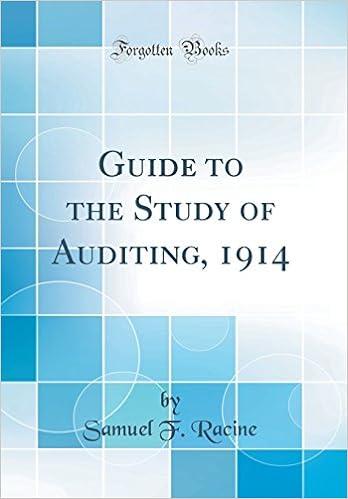Question
The following transactions were completed by Daws Company during the current fiscal year ended December 31: Jan. 29 Received 40% of the $18,200 balance owed
The following transactions were completed by Daws Company during the current fiscal year ended December 31:
Jan. 29 Received 40% of the $18,200 balance owed by Kovar Co., a bankrupt business, and wrote off the remainder as uncollectible.
Apr. 18 Reinstated the account of Spencer Clark, which had been written off in the preceding year as uncollectible. Journalized the receipt of $7,400 cash in full payment of Clarks account.
Aug. 9 Wrote off the $6,465 balance owed by Iron Horse Co., which has no assets.
Nov. 7 Reinstated the account of Vinyl Co., which had been written off in the preceding year as uncollectible. Journalized the receipt of $3,830 cash in full payment of the account.
Dec. 31 Wrote off the following accounts as uncollectible (one entry): Beth Connelly Inc., $7,190; DeVine Co., $5,510; Moser Distributors, $9,410; Oceanic Optics, $1,205.
Dec. 31 Based on an analysis of the $1,820,500 of accounts receivable, it was estimated that $36,410 will be uncollectible. Journalized the adjusting entry.
Required:
1. Record the January 1 credit balance of $25,415 in a T account for Allowance for Doubtful Accounts.
2.
A. Journalize the transactions. For the December 31 adjusting entry, assume the $1,820,500 balance in accounts receivable reflects the adjustments made during the year. Refer to the chart of accounts for a listing of the account titles the company uses.
B. Post each entry that affects the following selected T accounts and determine the new balances: Allowance for Doubtful Accounts and Bad Debt Expense.
3. Determine the expected net realizable value of the accounts receivable as of December 31 (after all of the adjustments and the adjusting entry).
4. Assuming that instead of basing the provision for uncollectible accounts on an analysis of receivables, the adjusting entry on December 31 had been based on an estimated expense of of 1% of the net sales of $18,350,000 for the year, determine the following:
A. Bad debt expense for the year.
B. Balance in the allowance account after the adjustment of December 31.
C. Expected net realizable value of the accounts receivable as of December 31.
Step by Step Solution
There are 3 Steps involved in it
Step: 1

Get Instant Access to Expert-Tailored Solutions
See step-by-step solutions with expert insights and AI powered tools for academic success
Step: 2

Step: 3

Ace Your Homework with AI
Get the answers you need in no time with our AI-driven, step-by-step assistance
Get Started


